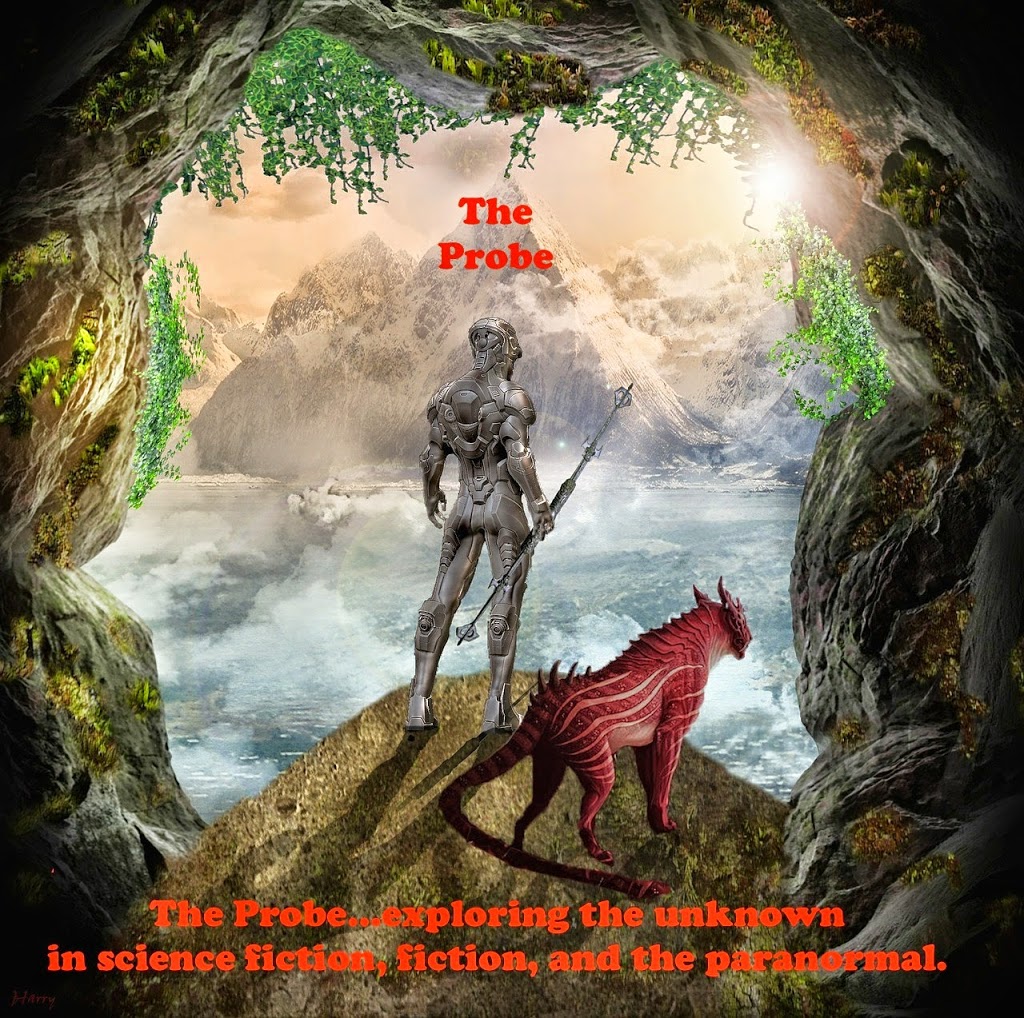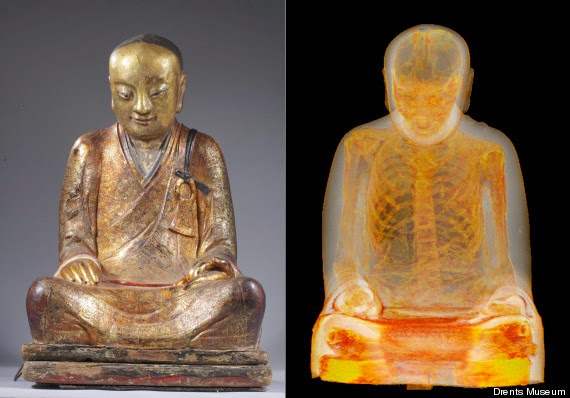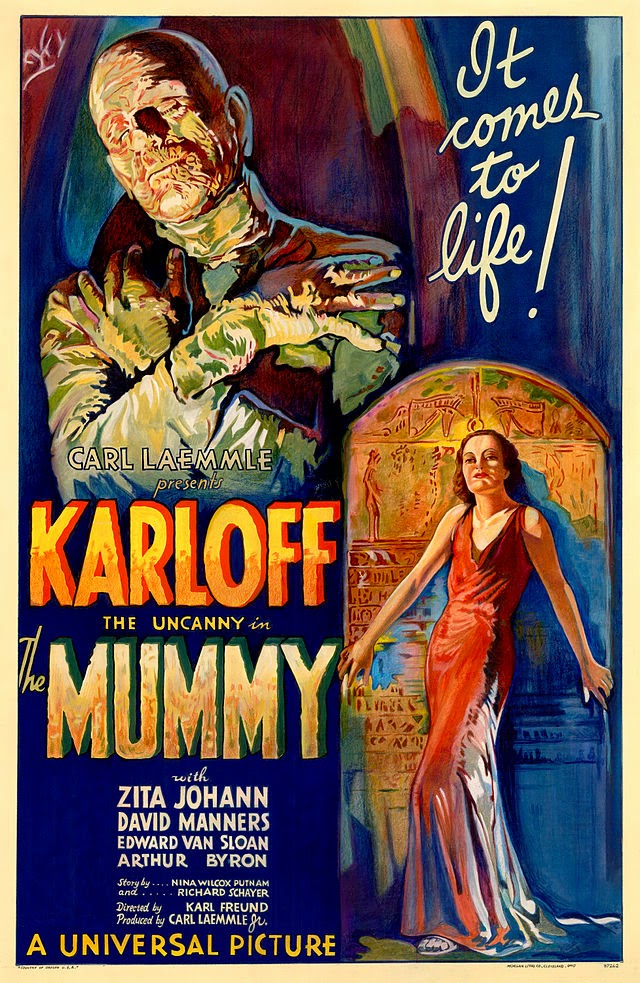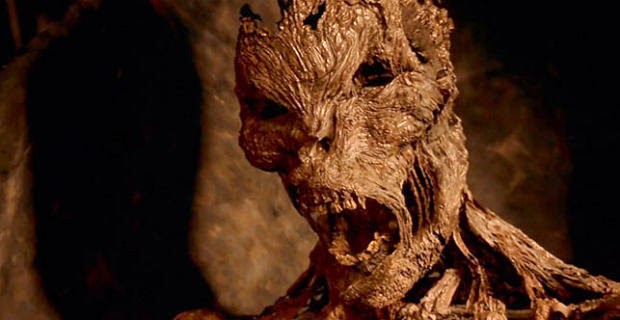By Science Fiction Author,
Clara Bush
new posts Mondays
The Short of It
The statue may have been smuggled out of China during the Cultural Revolution and purchased by a private individual who, in 1996, wanted to have it repaired. The restorer found the remains.
Radioactive isotopes of carbon were used to verify and date the mummy. Later a CT scan done in Germany and a follow-up in the Netherlands revealed the mummy in detail. What researchers thought was lung tissue turned out to be tiny scraps of paper with Chinese text.
(
Note: A little creepy to think this “private individual”—who thought he merely had a piece of Chinese art—was actually decorating his home with an entombed mummy. Okay, I feel a story exploding in my head.)Though researchers are still unclear as to how Linquan became a mummy, they speculate that the remains may offer an example of self-mummification, which was practiced by monks during this time period. Monks embarked upon years of the grueling process— mummifying themselves to death—in their effort to reach enlightenment.
- For 1,000 days (or approximately 2.74 years), the monk existed on seeds, fruits, and berries—only—and employed extensive physical activity to rid himself of all body fat.
- The next 2.74 years, he ate bark and roots exclusively, and near the end of this period, he drank a poisonous tea, which caused vomiting and loss of body fluids. The tea also served as a preservative and destroyed maggots and bacteria that cause the body to decay after death.
- During the final stage, the monk locked himself in a stone tomb slightly larger than his body. He sat in the lotus position from which he did not move. A small air tube was inserted to provide oxygen. He rang a bell each day to let everyone know he was still alive. When the bell stopped ringing, the tube was removed and the tomb was sealed for another 1,000 days.
- If, at the end of this time, the monk was successful in mummifying himself, he was elevated to the status of Buddha, removed and placed in a temple, and worshipped.
- However, if the body had decomposed, the monk was resealed in his tomb, respected, but not worshipped.
Probe-Filing
The same antagonist, Imhotep, comes to life in the 1999 remake of The Mummy.
And for Mummy lovers everywhere, Universal is reviving the Mummy yet again in the studio’s classic movie monster renaissance. This reboot began with the movie Dracula Untold released in October 2014. The Mummy is Universal’s next monster slated to walk the big screen with an official release date of Summer 2016.
The project has encountered several setbacks having two skilled directors back out in the process. Those two directors were Underworld‘s Len Wiseman for scheduling conflicts and Mama‘s Andy Muschetti due to creative differences. It has been reported that Alex Kurtzman, Fringe co-creator, will direct.
Personally, I am elated by the prospect of a classic movie monster awakening. I mean, what current monster do we have that can go toe-to-to with such greats as Dracula, Frankenstein, Wolfman, and The Mummy? They are classics—unrivaled in my opinion except for maybe The Creeper in 1991 movie Jeepers Creepers.
Over the next couple of Monday blog posts, we will explore the creation of a monster. These monsters are not to be confused with aliens—aka creatures from outer space.
What would be your guidelines for designing a memorable creature?
Also, what do you hope to see in Universal’s reboot of The Mummy?
I think forced self-mummification of the antagonist would be some scary sh*t. He would be angry as hell when revived. And I definitely think a person decorating his house with artwork that he didn’t know was really a mummy could bring horrifying results to the remake.
blog post #92
The Probe—probing the unknown in science fiction, science, paranormal, fiction, ghosts, monsters, aliens, space, UFOs, strange, and weird.
- Coghlan’s Traveling Coffin Urban Legend - April 4, 2024
- Richmond Vampire Urban Legend - March 7, 2024
- Lick Lick Urban Legend - February 8, 2024





